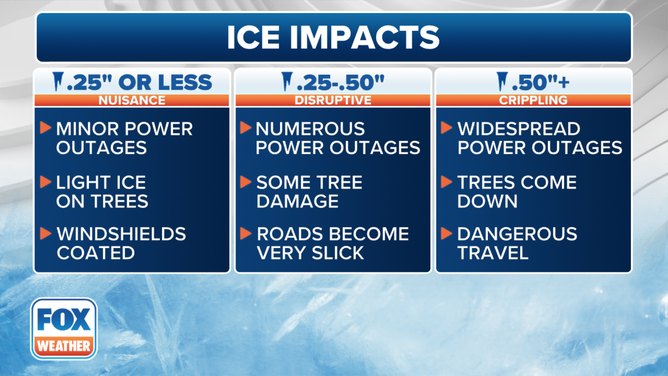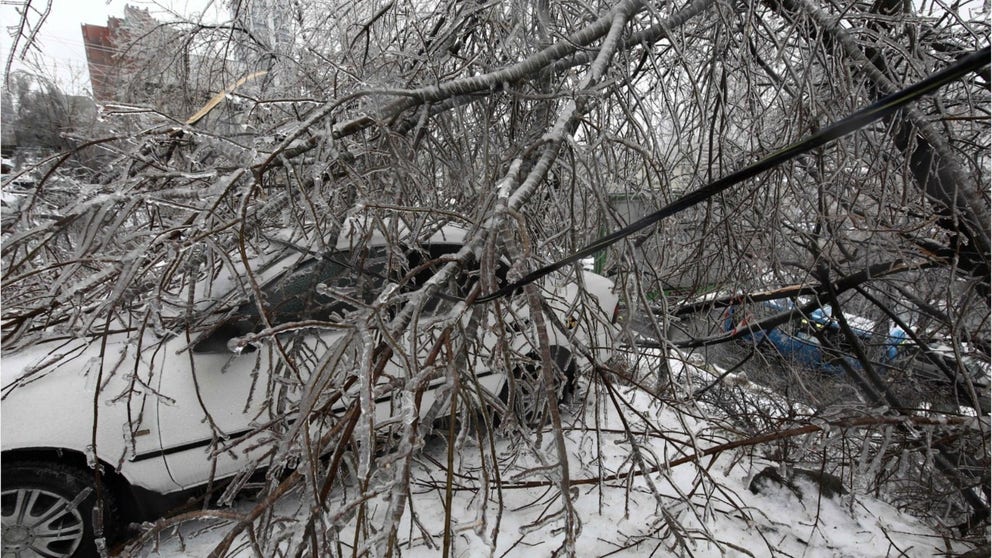How to measure ice accretion
The National Weather Service says proper measurements are vital to them and others in the scientific community. Here's some helpful guidance about how to measure ice on a branch.
What is an ice storm?
Ice storms can have a much more crippling effect than a snowstorm.
Winter storms can leave the entire landscape under a thick coat of ice if your area ends up with a bout of freezing rain. But if you are wondering how much ice you have at your location, measuring it is as easy as four steps.
6 BASIC STEPS FOR PROPERLY MEASURING SNOW

Ice covers the branches of a tree in Hangzhou in eastern China's Zhejiang province on Jan. 25, 2016.
(STR / AFP / Getty Images)
The National Weather Service says proper measurements are vital to them and others in the scientific community. Here's some helpful guidance about how to measure ice on a branch.
1. Locate
First, you will want to find a tree or shrub branch with ice accretion.
2. Measure
Use your tape measure or ruler to measure the ice on the top and bottom of the branch. You do not need to include the branch. Since water usually drips, it's typically thicker on the bottom side than on the top.
HOW MUCH ICE IS NEEDED TO KNOCK OUT POWER, DAMAGE TREES?
3. Add
Next, add the two measurements together and divide by 2 to get an average ice accretion.
For example, if there is 0.25 inches of ice on the top of the branch and 0.75 inches on the bottom, the ice accretion would be 0.50 inches.
4. Share
Once you’ve measured the ice, the NWS encourages you to send them your report. You can do so in an online form or via Facebook or Twitter. When you share a report, you should include your location, whether your report is a measurement or estimate and what time you took it.

Impacts from various thicknesses of ice accretion.
(FOX Weather)
Generally, ice accretions of less than a quarter-inch are considered to be a nuisance, but impacts start to become disruptive once amounts close in on a half-inch or more.
Power outages can become numerous around a half-inch of ice. Driving is also considered hazardous around the same amount.
